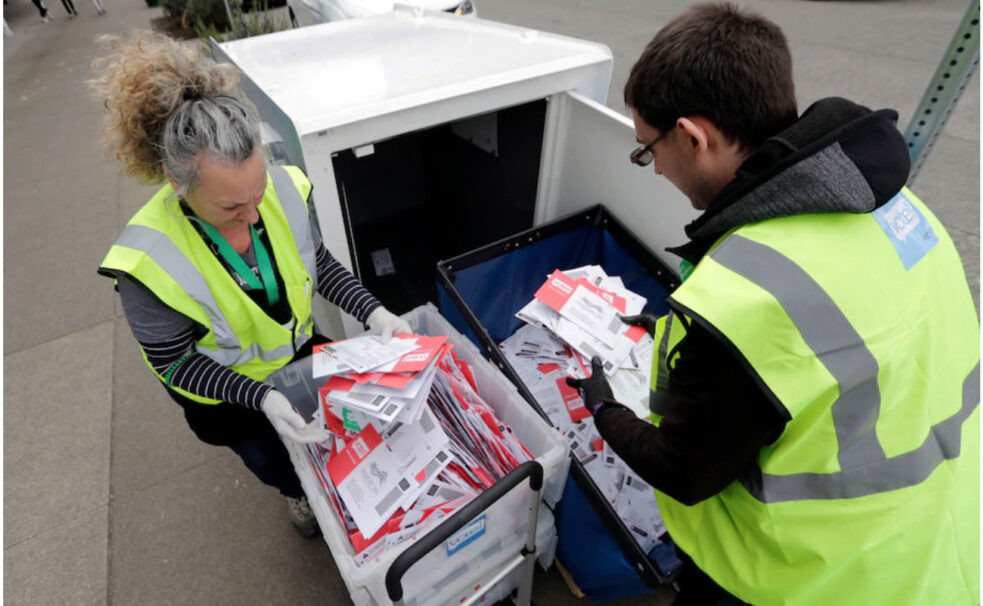The U.S. Cybersecurity and Infrastructure Security Agency (CISA) issued an advisory Friday about vulnerabilities affecting versions of Dominion Voting Systems Democracy Suite ImageCast X, an in-person voting system used in local jurisdictions across the country. Yes, that Dominion Voting Systems that has been a target of people pushing false stolen-election narratives. Before sounding the alarm on these systems, however, it’s important to remember the following:
First, CISA said there is no evidence that the election software flaws have been exploited to change any election results. Rather, the advisory issued today encourages officials to mitigate any identified vulnerabilities and offers suggestions for minimizing risk. In fact, in a statement to The Associated Press, CISA Executive Director Brandon Wales said “states’ standard security procedures would detect exploitation of these vulnerabilities and in many cases would prevent attempts entirely.”
Second, election officials employ myriad checks and balances, tests, and verifications before, during and after every election that — together — protect the integrity of the voting process and its underlying systems.
Every state and local election official has their own protocols and best practices to maintain the chain of custody for election materials and detect anomalies. These controls include:
- voter verification at the time of registration as well as when voters request absentee ballots;
- pre-election Logic and Accuracy testing to ensure ballot tabulation equipment is working properly;
- physical security measures, like 24/7 surveillance, witness forms elections workers must sign so officials have an auditable log of when materials and equipment were accessed and changed hands, and tamper-evident locks and seals;
- reconciliation reports that provide a daily accounting of mail ballots received; and
- post-election audits that confirm the reported results.
These measures are enhanced by cyber security protections from IT departments and federal intelligence agencies that are continuously improving their security posture in the face of threats from bad actors.
With numerous safeguards in place, voters should be confident in their election system and its outcomes.
Finally, expanding access to mail ballots may actually improve security, despite persistent misinformation and disinformation to the contrary. Vote-by-mail systems also benefit from the protections U.S. Postal Inspectors provide in ensuring the integrity of the U.S. Postal Service and its ability to deliver democracy to voters across the country.
In seven states, every voter automatically receives a paper ballot by mail for every election, which they mark by hand and return by mail, official drop box, or in person to their elections office. And in 27 more states, voters do not need an excuse to obtain a mail ballot.
Vote-by-mail is secure and still preserves accessible options for voters with disabilities to use assistive voting devices. Plus, it’s a transparent process with a verifiable paper trail that instills confidence in voters — especially when ballot tracking coupled with robust curing programs are in place that allow officials to investigate missing or unmatched signatures and offer voters the opportunity to remedy errors. More states and local jurisdictions should consider embracing expanded mail-ballot access with signature curing as a proven, secure voting option.
###
Lori Augino is the executive director of National Vote at Home Institute, a nonpartisan nonprofit dedicated to access to and confidence in voting by mail. Previously, she served as the president for the National Association of State Election Directors from 2020 to 2021 and as the state elections director under former Republican Washington Secretary of State Kim Wyman.

